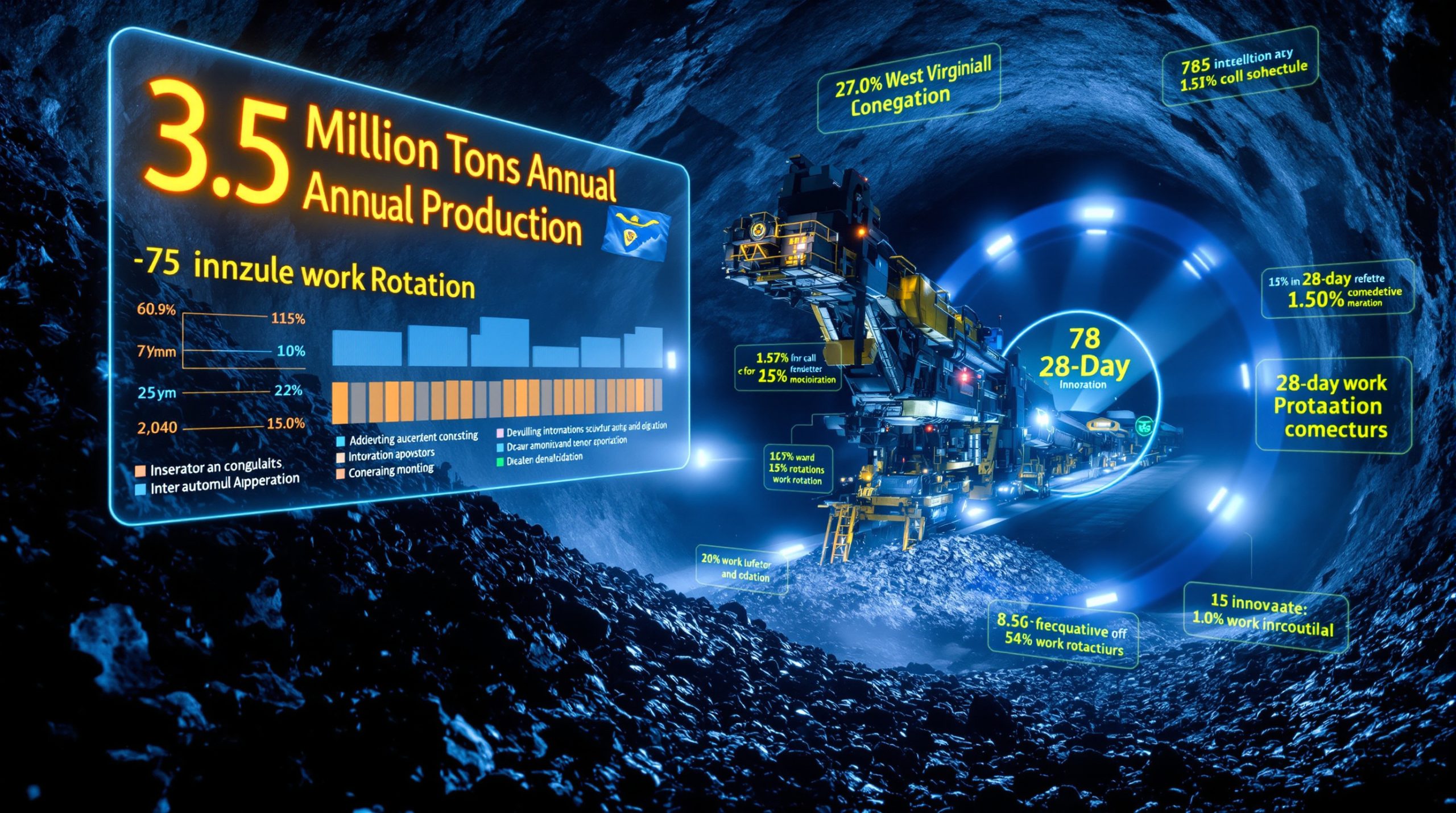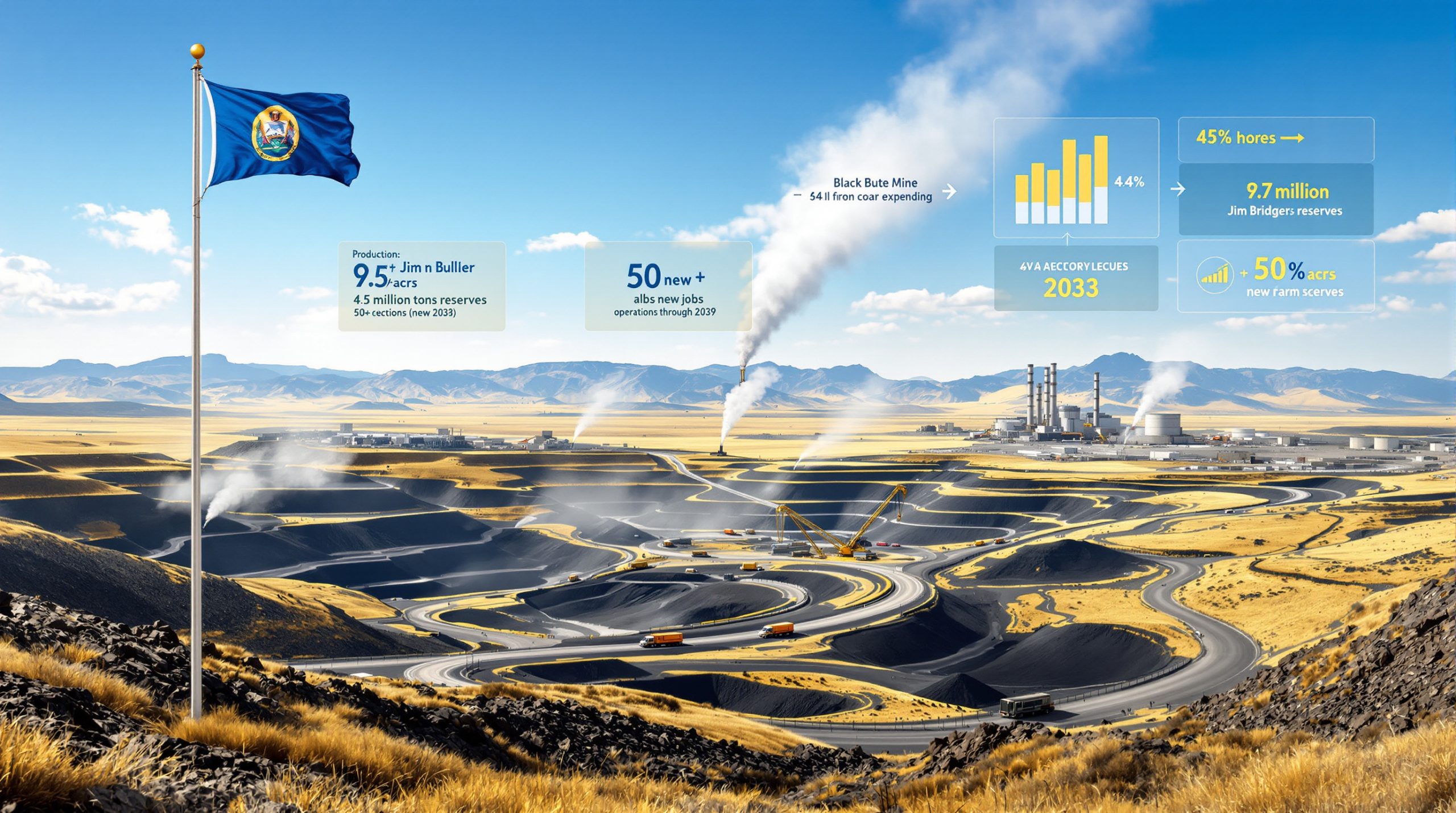What is Batch-Level Tracking in Iron Ore Mining?
Batch-level tracking represents a paradigm shift in how iron ore producers monitor, document, and leverage data throughout their operations. Unlike traditional monitoring systems that track only high-level production volumes and basic quality metrics, batch-level tracking captures granular data about specific batches of iron ore as they move through the mining, processing, and supply chain journey.
At its core, batch-level tracking provides mining companies with unprecedented visibility into the precise characteristics and environmental footprint of discrete ore batches. This granular approach enables producers to trace quality parameters, processing methods, environmental impacts, and chain of custody information with exceptional detail.
As Juliana Bruwer, Product Expert at SAP, explains: "Batch-level tracking provides granular operational and compliance data to harness actionable insights that empower proactive decision-making based on KPI performance against targets."
Understanding the Concept and Its Importance
The importance of batch-level tracking lies in its ability to create a digital fingerprint for each batch of iron ore. This fingerprint includes comprehensive data points such as:
- Chemical composition (iron content, phosphorus, silica, alumina levels)
- Physical properties (moisture content, particle size distribution)
- Processing parameters (crushing settings, beneficiation methods)
- Environmental metrics (water usage, energy consumption, emissions)
- Chain of custody information (extraction location, processing facilities, transportation routes)
This level of detail enables mining companies to optimize operations, demonstrate regulatory compliance, verify environmental claims, and provide customers with the documentation increasingly required in global steel markets.
How Batch-Level Tracking Differs from Traditional Monitoring
Traditional monitoring approaches in iron ore mining typically focus on aggregate production statistics and basic quality control. While these systems provide valuable operational insights, they lack the granularity needed to meet emerging market demands and regulatory requirements.
Key differences between traditional and batch-level tracking include:
| Traditional Monitoring | Batch-Level Tracking |
|---|---|
| Aggregate production data | Batch-specific information |
| Basic quality parameters | Comprehensive quality profiles |
| Limited environmental metrics | Detailed environmental footprint |
| Manual documentation | Automated data collection |
| Retrospective reporting | Real-time monitoring |
| Siloed information systems | Integrated data architecture |
Modern batch-level tracking systems utilize advanced sensing technologies, sophisticated data integration platforms, and cloud-based infrastructure to capture and analyze information at unprecedented levels of detail. This technological foundation enables mining companies to transform raw data into actionable insights that drive business value.
Why Are Iron Ore Producers Turning to Batch-Level Tracking?
Iron ore producers are embracing batch-level tracking systems in response to multiple market pressures and emerging opportunities. This shift represents both a defensive strategy against market challenges and a proactive approach to capitalizing on new value creation possibilities.
Market Pressure from Steelmakers
The global steel industry faces significant headwinds, with weak demand putting pressure on steelmakers' margins. This challenging environment has cascaded upstream, with steel producers demanding lower input costs from iron ore suppliers.
"Steelmakers are demanding lower costs due to weak steel demand globally," notes the Global Mining Review's July 2025 analysis. "This market reality has forced miners to find new ways to demonstrate value and optimize operations."
In this context, batch-level tracking provides iron ore producers with the detailed operational insights needed to:
- Identify inefficiencies in extraction and processing
- Optimize energy and water consumption
- Reduce waste generation
- Demonstrate superior product quality
- Justify pricing based on verified quality and sustainability metrics
These capabilities allow producers to maintain margins even in challenging market conditions by focusing on operational excellence and value-based pricing strategies.
The Shift Toward Low-Grade Ore Processing
The global iron ore industry is experiencing a fundamental transition toward processing lower-grade ores. This shift is driven by the gradual depletion of high-grade deposits and the economic imperative to maximize resource utilization.
As Juliana Bruwer observes: "Low-grade ores fuel innovation, but they require more energy, water, chemicals, and produce more gangue and emissions per ton of product."
Major mining companies are investing heavily in this area, with BHP and Rio Tinto developing significant partnerships to advance low-grade ore processing technologies. These projects require sophisticated tracking systems to:
- Monitor increased resource inputs (energy, water, chemicals)
- Track waste generation and management
- Document emissions profiles
- Optimize complex processing parameters
- Verify final product quality
Batch-level tracking in iron ore mining provides the detailed monitoring capabilities essential for managing these more resource-intensive operations while maintaining environmental compliance and product quality.
New Markets in Direct Reduction Steelmaking
The steel industry is undergoing a transformation as producers increasingly adopt direct reduction (DR) steelmaking processes, particularly those utilizing hydrogen as a reducing agent. These technologies offer significantly lower carbon footprints compared to traditional blast furnace routes but require iron ore with specific characteristics.
For DR-grade iron ore, critical quality parameters include:
- High iron content (typically >67% Fe)
- Low silica and alumina content
- Minimal phosphorus and sulfur
- Consistent physical properties
Batch-level tracking enables iron ore producers to verify that their products meet these exacting specifications, opening access to premium markets in the growing green steel sector. The ability to provide comprehensive batch-specific data also supports steel manufacturers in their own environmental reporting and regulatory compliance efforts.
What Regulatory Factors Are Driving Adoption?
The regulatory landscape for mining and metals is evolving rapidly, with governments worldwide implementing increasingly stringent requirements for environmental performance, supply chain transparency, and product documentation. These regulatory developments represent powerful drivers for batch-level tracking adoption.
Upcoming EU Digital Product Passport Requirements
Beginning in 2026, steel products sold in the European Union will require a Digital Product Passport (DPP) that provides comprehensive information about their environmental and social attributes. This requirement, part of the EU's broader Circular Economy Action Plan, will cascade upstream to iron ore suppliers.
The DPP will require detailed documentation of:
- Raw material origins
- Processing methods and inputs
- Environmental impacts throughout the lifecycle
- Chemical composition and physical properties
- Recycled content percentages
- Repair and recyclability information
For iron ore producers, this means that batch-level tracking is becoming not just a competitive advantage but a fundamental requirement for access to European markets. Companies without the capability to provide this level of detail may find themselves excluded from significant market opportunities.
Carbon Border Adjustment Mechanisms
The EU's Carbon Border Adjustment Mechanism (CBAM), scheduled for full implementation in 2026, represents another powerful driver for batch-level tracking adoption. This mechanism will impose carbon pricing on imported goods, including steel, based on their embedded carbon footprint.
"The EU CBAM will require detailed carbon certificates for imported steel, creating upstream pressure on iron ore suppliers to provide batch-specific emissions data," notes the Global Mining Review analysis.
To comply with CBAM requirements, steel exporters to the EU will need verified emissions data from their entire supply chain, including the iron ore inputs to their production processes. This creates direct demand for batch-level emissions tracking at the mining stage.
Iron ore producers that can provide accurate, verified carbon footprint data for their products will enable their steel industry customers to:
- Calculate their products' embedded carbon accurately
- Minimize CBAM payments through demonstrated efficiency
- Substantiate claims for preferential treatment of lower-carbon products
- Maintain market access to the European Union
Expanding Emissions Trading Systems
China's Emissions Trading System (ETS), currently the world's largest carbon market by volume, is expanding its scope to include additional industrial sectors. The steel industry is among those targeted for inclusion, with potential future extension to cover Scope 3 emissions from mining activities.
While China's ETS currently excludes Scope 3 mining emissions, the regulatory trajectory is clear: carbon pricing mechanisms are expanding in scope and stringency. Mining companies that implement batch-level tracking today will be better positioned to adapt to these emerging requirements.
As the Global Mining Review observes: "Regulations are tightening globally… the balance between profits and future-facing technologies is key for survival." This regulatory pressure shows no signs of abating, making investments in detailed tracking systems increasingly essential.
How Does Batch-Level Tracking Create Business Value?
Beyond regulatory compliance, batch-level tracking creates multiple avenues for business value creation. Forward-thinking iron ore producers are leveraging these systems to capture premium pricing, support certification programs, and gain advantages in government procurement processes.
Premium Pricing Opportunities
The ability to verify superior product quality and environmental performance creates opportunities for premium pricing in increasingly differentiated iron ore price forecast models. As the industry moves away from commodity pricing toward value-based models, batch-level data becomes a crucial differentiator.
"Detail can help fetch a better price," notes the Global Mining Review, highlighting how comprehensive batch information enables producers to:
- Demonstrate consistent chemical composition
- Verify physical properties ideal for specific applications
- Document environmental performance metrics
- Certify responsible mining practices
- Provide complete chain of custody information
These capabilities are particularly valuable for high-quality products destined for specialty applications, such as hydrogen-based direct reduction ironmaking, where specific ore characteristics command significant premiums.
Green Steel Certification Support
The European Union's forthcoming voluntary green-steel label, announced in 2025, represents a significant market opportunity for iron ore producers with advanced tracking capabilities. This certification program will require detailed information about raw material inputs, creating immediate value for companies that can provide comprehensive batch-level data.
The green steel certification will likely assess:
- Carbon emissions per ton of product
- Energy efficiency metrics
- Water consumption and management
- Waste generation and recycling rates
- Responsible sourcing practices
Iron ore producers with batch-level tracking systems will be able to provide the detailed documentation needed to support their steel industry customers in achieving these certifications. This capability creates a competitive advantage in increasingly environmentally conscious markets.
Government Procurement Advantages
Government procurement programs worldwide are increasingly incorporating sustainability criteria into their purchasing decisions. These "buy clean" policies prioritize steel products with demonstrated sustainable practices throughout the supply chain, creating downstream demand for batch-level environmental data from iron ore demand insights.
Examples of this trend include:
- The U.S. Federal Buy Clean Initiative
- Canada's Greening Government Strategy
- The EU's Green Public Procurement guidelines
- Japan's Green Procurement Law
- Australia's Sustainable Procurement Guide
These programs create market pull for environmentally verified products, incentivizing steel producers to demand detailed environmental performance data from their iron ore suppliers. Mining companies that can provide this information gain preferential access to these government-influenced supply chains.
What Technologies Enable Effective Batch-Level Tracking?
Implementing effective batch-level tracking requires a sophisticated technology stack that combines advanced sensing capabilities, data integration platforms, analytical tools, and secure information sharing mechanisms. Several key technologies are enabling this transformation.
Modern ERP Systems for Continuous Monitoring
Enterprise Resource Planning (ERP) systems have evolved significantly from their origins as financial management tools. Modern mining-specific ERP platforms now offer comprehensive capabilities for continuous monitoring of operational and environmental parameters.
These systems enable:
- Real-time monitoring of emissions, energy, water, and waste
- Integration of quality and environmental data
- Proactive decision-making based on KPI performance
- Rapid adjustment capabilities rather than delayed reporting
- Seamless data exchange with customers and regulators
SAP's solutions exemplify this approach, with Juliana Bruwer highlighting their "green-ledger functionality" that allows companies to track carbon budgets "with the precision of a financial budget." This integration of environmental and financial tracking creates powerful management capabilities.
AI-Enhanced Environmental Reporting
Artificial intelligence applications are transforming batch-level tracking by automating data collection, analysis, and reporting processes. These data-driven mining innovation systems dramatically reduce the administrative burden of detailed tracking while improving data quality and accessibility.
Key AI applications in this space include:
- Automated data gathering from multiple operational points
- Natural language generation for report creation
- Data visualization for environmental dashboards
- Intelligent emission-factor identification
- Matching products to lifecycle-assessment database entries
These capabilities allow mining companies to generate comprehensive batch-level reports without the prohibitive administrative costs that would otherwise be associated with such detailed documentation.
Cloud-Based Solutions for Scalability
Cloud infrastructure provides the foundation for scalable, accessible batch-level tracking systems. Cloud-based solutions offer significant advantages over traditional on-premises alternatives, including:
- Accessibility for companies of all sizes
- Scalability to handle increasing data volumes
- Integration capabilities across supply chains
- Enhanced data sharing with customers and regulators
- Reduced IT infrastructure requirements
- Automatic updates to meet evolving regulations
These advantages make cloud-based tracking solutions particularly attractive for mining companies seeking to implement batch-level tracking without massive upfront infrastructure investments. The scalability of cloud systems also allows companies to start with basic tracking capabilities and expand as needs evolve.
How to Implement Batch-Level Tracking Systems?
Implementing effective batch-level tracking requires careful planning, strategic technology selection, and thoughtful process design. Companies must identify critical tracking points, select appropriate parameters, and successfully integrate new systems with existing operations.
Identifying Critical Tracking Points
The first step in implementation is identifying key points in the production process where batch-level data should be collected. These typically include:
- Extraction points – Documentation of ore body characteristics, drilling parameters, and initial quality metrics
- Crushing and grinding stages – Monitoring of size reduction, energy consumption, and equipment performance
- Beneficiation processes – Tracking of concentration methods, chemical additions, and quality improvements
- Material handling transfers – Documentation of batch movements, blending activities, and storage conditions
- Loading and transportation – Recording of shipment details, logistics parameters, and chain of custody
For each tracking point, companies must determine the appropriate technology for data capture, which may include:
- Online analyzers for real-time composition monitoring
- Energy meters for process-specific consumption tracking
- Water flow meters for usage quantification
- Emissions monitoring equipment for environmental impact assessment
- RFID or barcode systems for batch identification and tracking
Selecting Appropriate Parameters to Track
Not all parameters provide equal value for batch-level tracking. Companies must strategically select which metrics to monitor based on regulatory requirements, customer needs, and operational improvement opportunities.
Key parameters typically include:
Quality Parameters:
- Chemical composition (Fe content, silica, alumina, phosphorus, sulfur)
- Physical properties (size distribution, moisture, bulk density)
- Metallurgical characteristics (reducibility, clustering tendency)
Environmental Parameters:
- Energy consumption (kWh per ton processed)
- Water usage (liters per ton processed)
- Chemical consumption (kg per ton processed)
- Greenhouse gas emissions (kg CO₂e per ton)
- Waste generation (tailings, overburden volumes)
Process Parameters:
- Equipment settings and configurations
- Processing times and throughput rates
- Maintenance activities and equipment condition
- Operator interactions and manual interventions
- Quality control tests and adjustments
The specific parameters selected should align with the company's strategic objectives, regulatory obligations, and customer requirements.
Integration with Existing Systems
Successful batch-level tracking implementation requires thoughtful integration with existing operational and information systems. This integration should focus on:
- Connecting with existing quality control systems to avoid data duplication
- Upgrading sensors and data collection points where necessary
- Establishing data standardization protocols across systems
- Creating secure data sharing mechanisms with customers and regulators
- Maintaining backward compatibility with legacy systems where required
"The most successful implementations build upon existing systems rather than replacing them entirely," notes a mining technology consultant quoted in the Global Mining Review. "This approach minimizes disruption while maximizing the value of previous investments."
Integration strategies should also consider future expansion requirements, ensuring that initial implementations can scale as tracking needs evolve and regulatory requirements increase in scope and stringency.
What Are the Challenges of Batch-Level Tracking?
While batch-level tracking offers significant benefits, implementation presents various challenges that mining companies must address. These range from technical hurdles and cost considerations to organizational change management issues.
Technical Implementation Hurdles
Mining environments present unique challenges for sophisticated tracking systems, including:
- Harsh operating conditions that can damage or degrade sensing equipment
- Connectivity limitations in remote mining locations
- Data accuracy and reliability concerns in dusty, vibration-prone environments
- System integration complexities across multiple operational technologies
- Data volume management challenges from continuous monitoring
These technical challenges require careful equipment selection, robust system design, and appropriate redundancies to ensure reliable operation. Mining-specific hardened sensors, edge computing capabilities, and fault-tolerant system architectures are often essential components of successful implementations.
Cost Considerations
Implementing comprehensive batch-level tracking requires significant investment across multiple categories:
- Hardware investments: Specialized sensors, monitors, and field equipment ($500,000-$2 million for a typical operation)
- Software systems: ERP modules, data integration platforms, and analytical tools ($1-5 million depending on scale)
- Integration services: Connecting new and existing systems ($250,000-$1 million)
- Staff training: Developing internal capabilities ($100,000-$500,000)
- Ongoing maintenance: System updates, calibration, and repairs (15-20% of initial investment annually)
These costs must be weighed against the potential benefits, including regulatory compliance, operational improvements, and market access. For many companies, a phased implementation approach can help manage these costs while progressively building capabilities.
Organizational Change Management
Perhaps the most significant challenge in batch-level tracking implementation is the organizational change required. This includes:
- Shifting from aggregate to batch-level thinking throughout the organization
- Training staff on new procedures and data collection responsibilities
Want to Capitalise on the Next Major Mineral Discovery?
Stay ahead of the market with Discovery Alert's proprietary Discovery IQ model, which instantly identifies significant mineral discoveries on the ASX and transforms complex data into actionable investment opportunities. Explore why major discoveries can lead to substantial returns by visiting our dedicated discoveries page and begin your 30-day free trial today.




